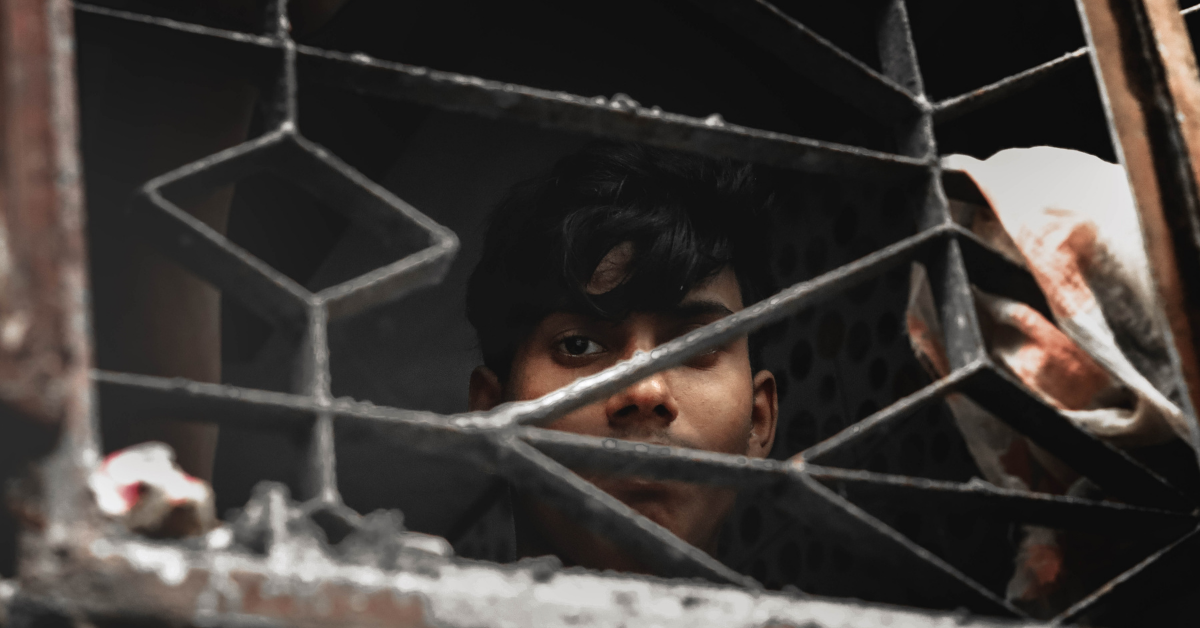The theme of this years Musikhjälpen (Music Aid) is child labour. SweDev met with PhD researcher Andreas Henriksson to learn more.
 Photo: Unsplash / Ehteshamul Haque Adit
Photo: Unsplash / Ehteshamul Haque Adit
Every December, Swedish Radio arranges a fundraising campaign called Musikhjälpen (Music Aid). Musikhjälpen 2021 will focus on the theme “for a world without child labour”, calling attention to the now rising number of children who are forced to work across the globe.
The very worst form of child labour is modern slavery, which in many cases is closely related to being a victim of human trafficking. 27 percent of all human trafficking victims in the world today are children – bound up to end up in exploitative environments. SweDev met with PhD researcher Andreas Henriksson from Umeå University, who’s research focuses on human trafficking in Asia, to learn more about how human trafficking can lead to modern slavery of children.
Would you say there is a correlation between human trafficking and modern slavery/forced child labour? If so, can you give an example of what this could look like?
There is some academic debate on the definition of human trafficking and modern slavery, but there are without any doubt clear overlaps. In the Palermo protocol (UN) human trafficking is defined to include prostitution of others, sexual exploitation, forced labour, slavery like practices and the removal of organs, and other types of exploitation. The definition requires absence of consent, but for children and under-aged this requirement is not necessary as it is sufficient that it is considered exploitative. More so, we shouldn’t overlook the subtler ways of controlling people such as debt, threats or using a position of power, even though the popular stereotype of a human trafficking victim might be someone who literally is locked in or beaten to submission.
There are many children around the world working to help their families on the farm but it is only considered child labour when it is exploitative or when the child is denied to go to school, play and develop because of it. Typical forms of child labour are in the garment sector or in brick-making factories, but also in the agricultural sector. Children are used as cheap and easily manipulated labour. In Cambodia for example, reports suggest that there are thousands of children working in brick kilns. Often, they are working there to pay off the family’s debt to aggressive loan sharks, and thence there has been no abduction of any kind. Yet, as these are highly harmful and abusive situations for children, it is still considered child labour and child trafficking. The effects on the children include physical and psychological harm, but also missed opportunities for education. More so, children being exploited as cheap labour are often vulnerable for other types of abuse, such as sexual exploitation.
Since the COVID-19 pandemic extreme poverty in the world has increased, how do you think that this will affect human trafficking and forced child labour?
The pandemic impacts most of the risk factors for human trafficking, including child labour. Increased poverty, joblessness and homelessness contribute to making children vulnerable for exploitation, and may force them to drop-out from school in order to support their families, and ultimately end up in forced labour situations. Lockdowns and closed borders may have contributed to further hiding the exploitations in families, and causing people to migrate under the radar, further increasing their vulnerabilities due to the lack of proper identifications and permits.
Lockdowns may also have contributed to decreased government monitoring and thus exacerbating the abuse of children. Closing of schools may have long-term effects of children’s vulnerabilities to human trafficking and child labour, as they may have difficulties to compensate for the lost months of school. Furthermore, studies indicate that those who were in forced labour situations before the pandemic were particularly exposed to the virus. This was due to a lack of access to protective masks and vaccines, as well as an inability of social distancing. Future studies may reveal the full scope of the effects of the pandemic but scholars and practitioners agree that the outlook is grim.
How do we stop human trafficking? What does research say?
Human trafficking is primarily driven by poverty, unemployment and economic inequalities. This forces people to take risks or to take jobs that they know are exploitative. So, in essence, if we reduce poverty we will simultaneously contribute to a decrease of human trafficking. Another important priority is to make sure that children have the opportunity to complete school, both in the short-term but also in the long-term. More so, another factor is the poor implementation of laws, including labour laws. Very often the problem is not the actual laws, but rather the implementation of the laws, often due to widespread corruption. We should not assume that this is just a problem that concerns developing countries – this is a global economic issue, involving the global supply chain of products and services.
Human trafficking is a complex problem that requieres multiple interventions, but the foundation should be to focus on poverty and better implementation of laws. I also think that it is advisable to focus on a wider range of exploitative practices regardless if we define them as human trafficking or not. A narrow focus on human trafficking risks concealing important issues of concern, for example other forms of abuse of children. Collaboration between different actors, ranging from civil society, businesses and governments, are needed to reduce human trafficking and other exploitative practices. International cooperation and dialogue is also needed.

Andreas Henriksson. Photo: Private.
Andreas Henriksson is a PhD researcher on anti-human trafficking at Umeå University. His doctoral studies are connected to Umeå Industrial Doctoral Scool (IDS), that aims to open up opportunities for collaboration between university researchers and the private and public sectors. This is done through jointly-funded research projects. Andreas collaboration partners are ERIKS Development partner (Erikshjälpen) and Interact (Evangeliska Frikyrkan, EFK) – two Swedish organisations that work against human trafficking in Asia.
